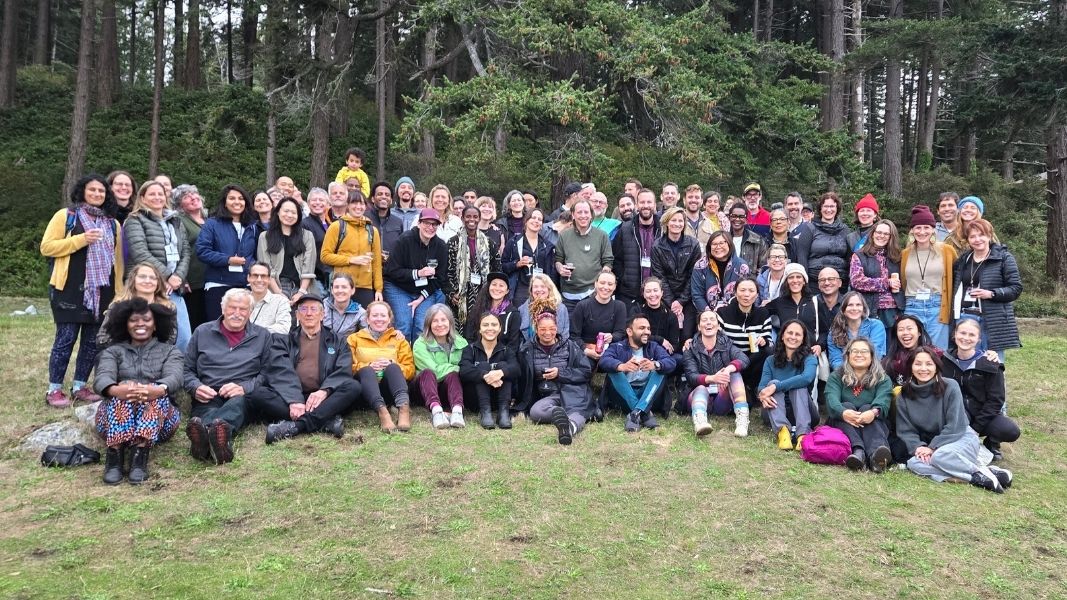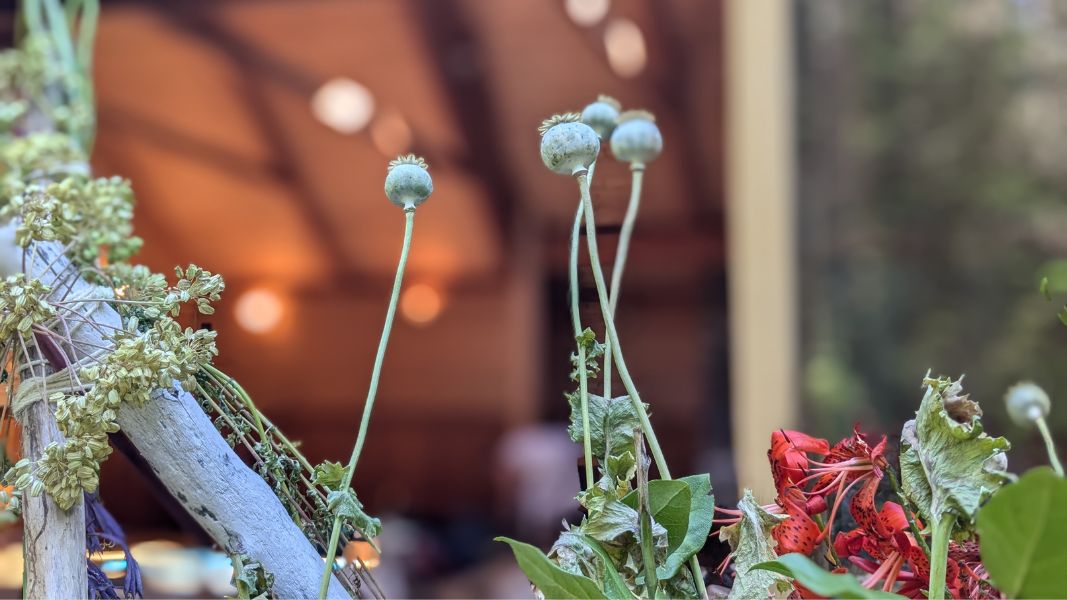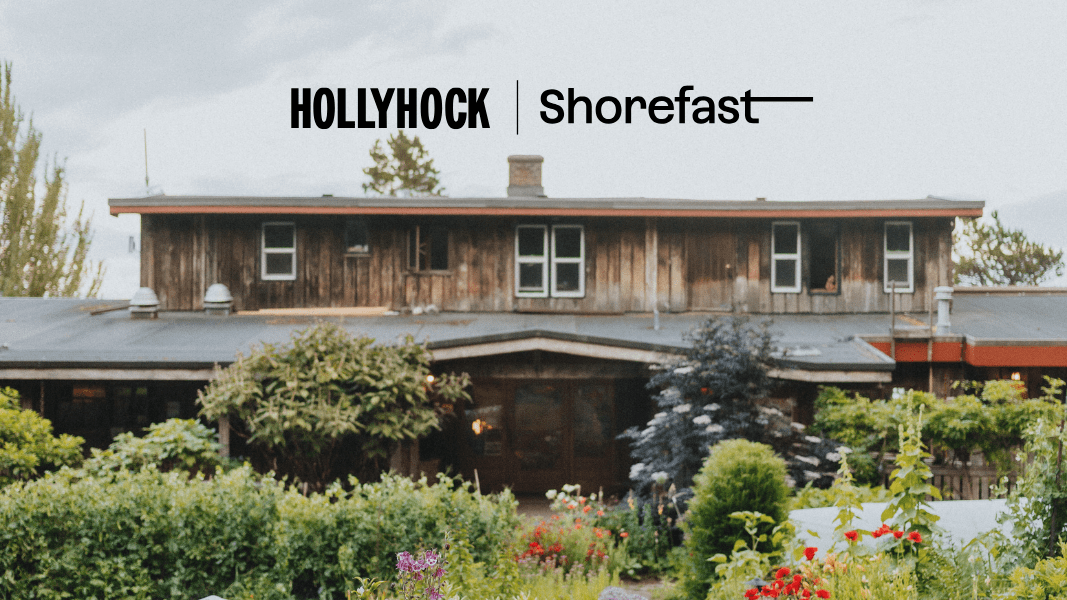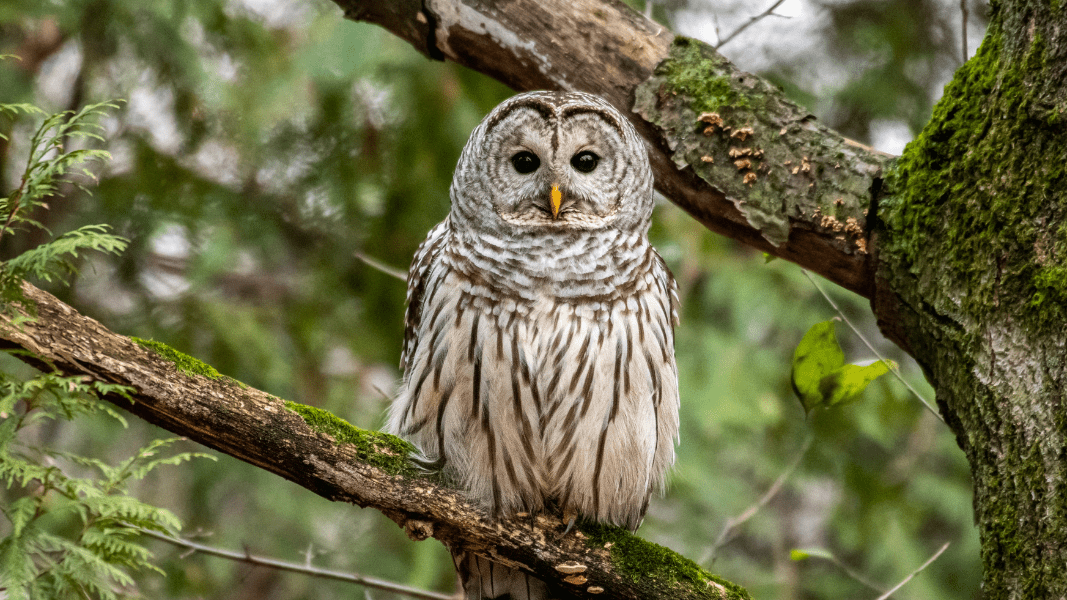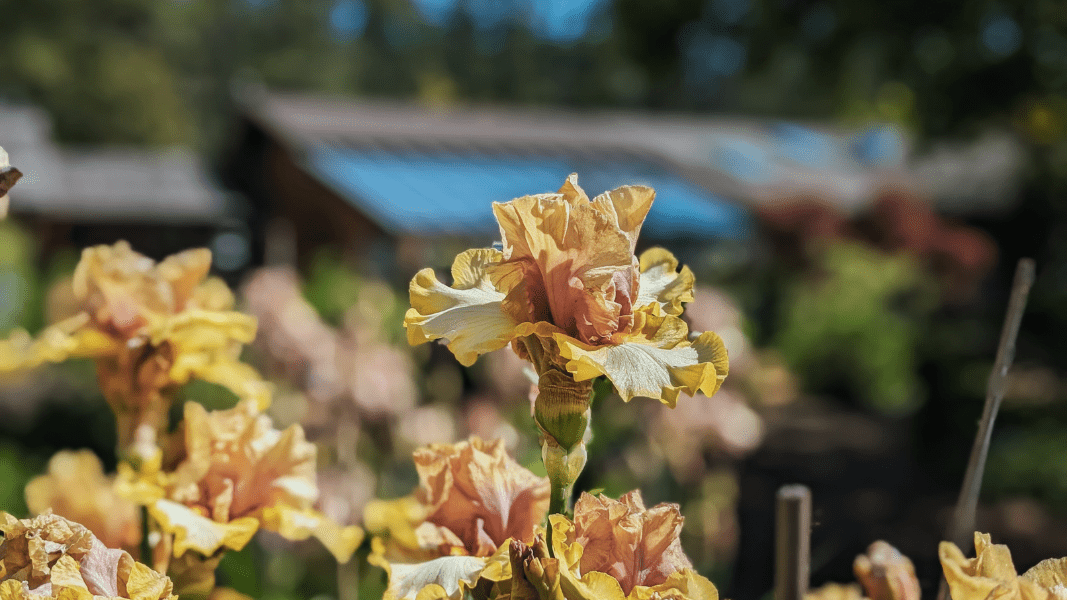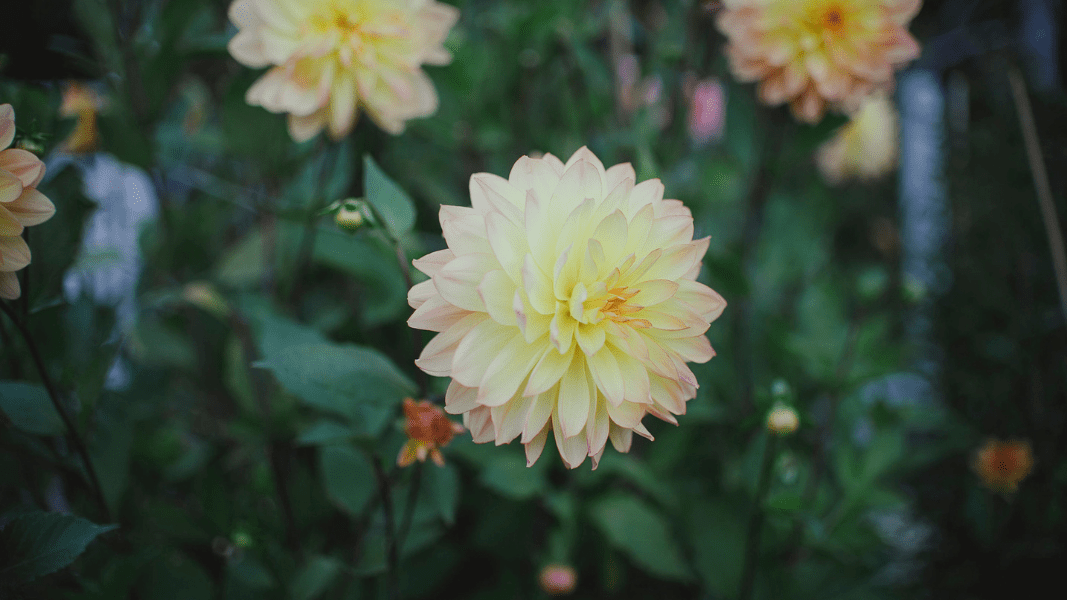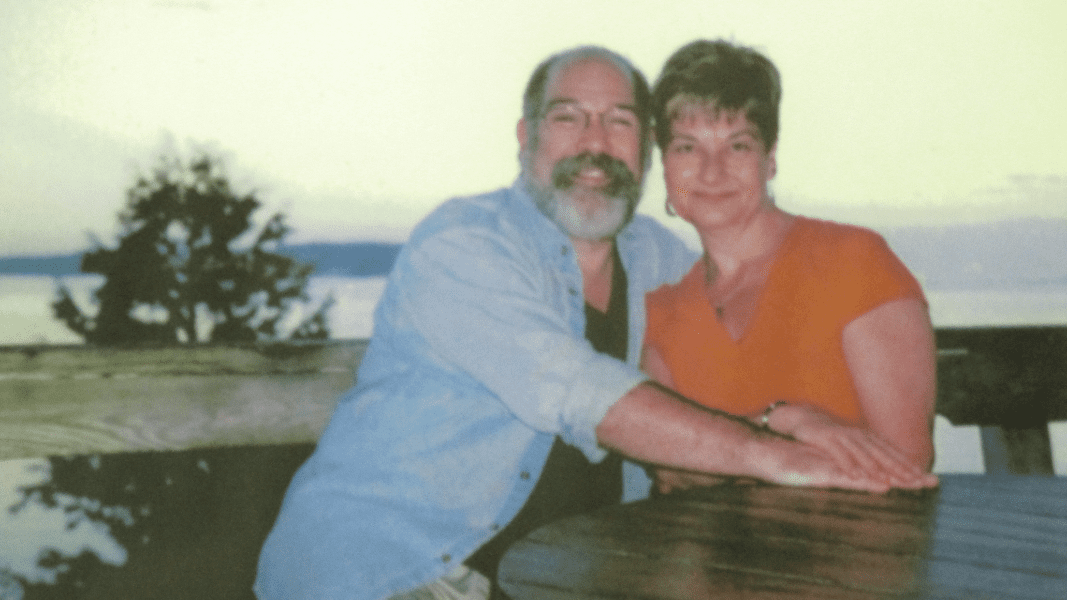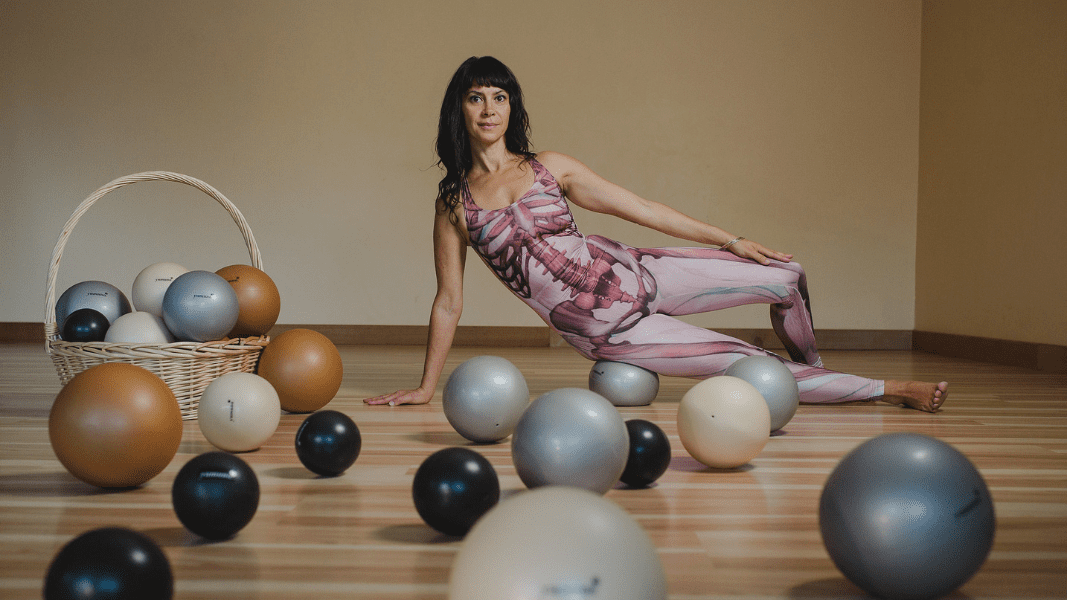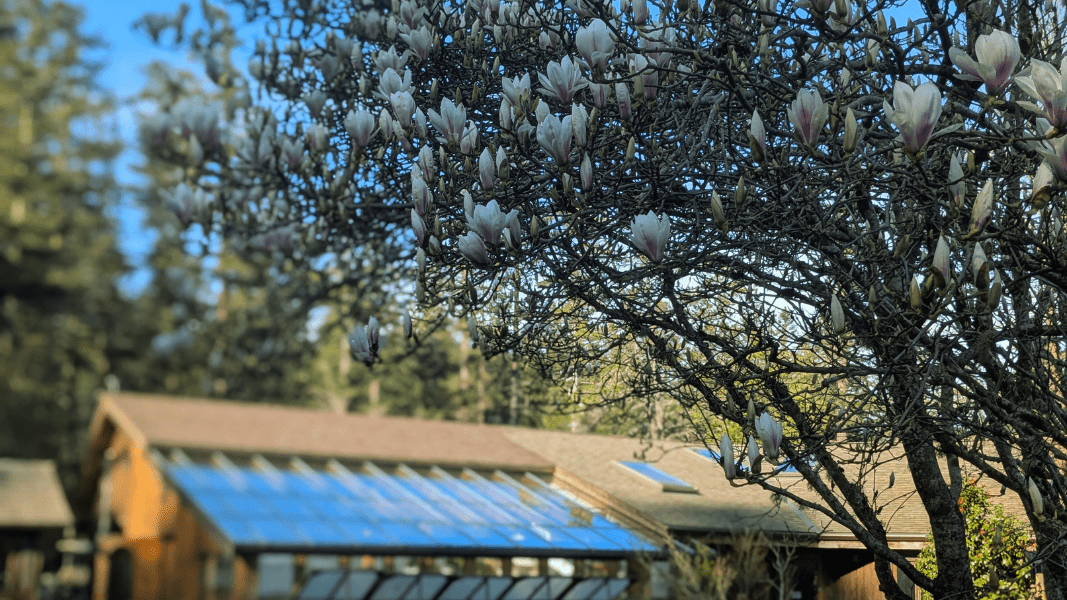Hi! I’m Charlene. I’m the Program Director at Hollyhock.
As some of you may know, my partner and I decided to spring for a Tiny Home last fall, on Cortes Island (already built, except for some interior finishing). It has been life-changing, life-giving and a mind-expanding space for both of us.
It turns out that less physical stuff really does mean more mental space to enjoy life.
Our tiny journey was motivated by two main things: I spend a good deal of time up on Cortes Island when Hollyhock is in season (April to October every year), and housing is a challenge – as it is in many remote communities. A tiny home parked on our friends’ property lets us have our own space when our campus is full and the island is bustling with summer activity.
The other reason is that I want to learn stuff. Where does our waste water go? How do you live off the grid comfortably? How do septic systems, out-houses, composting toilets work? (I’m still figuring out that last one)
In the city, I turn on a tap for clean water, flip a switch for the fireplace, and push a lever to flush the toilet. In the busyness of city living, it’s easy to take these conveniences for granted and not think about the life cycle of these systems and the impact they have on our land, air and waterways. On an island or in more rural places, you’re more immediately connected to all these things – and in my case, it makes me more curious about them.
Living off the grid in the winter, for example, is important in a place like Cortes given the frequency of power outages. Our talented builder made it possible because of three key features of our tiny home:
- A cold box instead of a fridge (pantry/cupboard built into the wall with open sides, protected by metal mesh to keep out critters) which exposes food to the natural elements without using electricity
- A wood stove (one of my absolute favourite features of the home) for heat
- A propane stove for cooking.
We are also working on rain water collection from our new gutters, useful for washing dishes during an outage. And lastly, storing a couple 5-gallon water jugs under your counter are crucial for drinking water, as are a couple solar lamps for light. And that’s it! You can comfortably live without electricity for days with just these few features.
A couple bonuses I didn’t expect is how satisfying (and fun!) it is to customize a space to make it your own (laying hardwood floors, for example), and how empowering it is to chop your own wood – #lumberjill- when you’ve never so much as picked up a hatchet before. Of course, this city gal still appreciates the vibrancy of urban living, but she sure is appreciating the contrast of slowing down, connecting to the natural world and the intentionality of micro-living. And one day soon, she hopes to figure out that toilet thing.
I love my Tiny Home and I’m not alone. The #tinyhousemovement is here. Still not convinced? Permaculture teacher Kenton Zerbin shared the 5 reasons he lives in a Tiny House last month on our Blog.
If you want to learn the basics of Tiny Homes and small-space living, check out our ‘Tiny Houses 101’ program at Hollyhock this May. You’ll leave this 5-day course with your very own tiny house floor plan, practical tips on utilities, building materials and the basics on living sustainably and simply. Sign up with a friend and you’ll both get 15% off your room + meals!
[mk_padding_divider]

